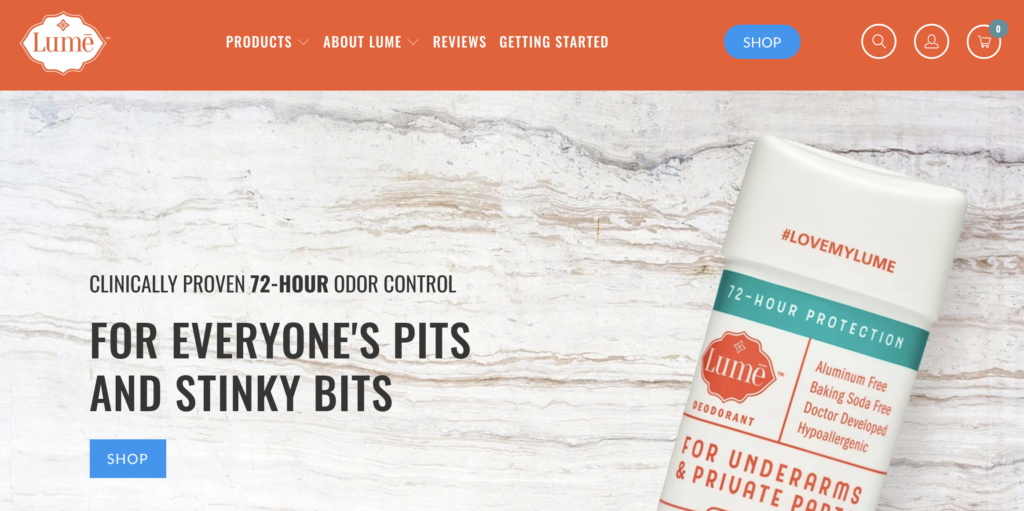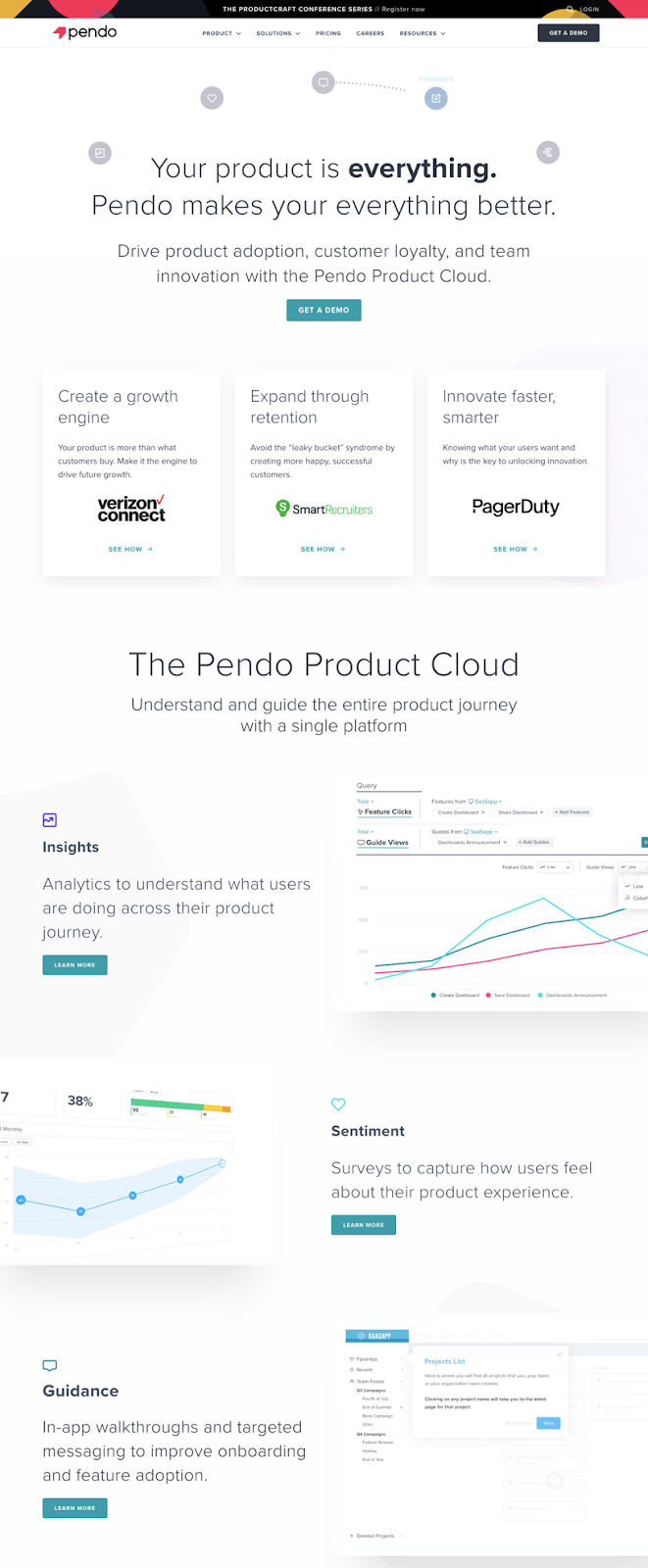Guest Post Written by: Krista Walsh

Confession: I’m a copywriter for a living, but when I got my website designed, I had zero content written for it.
I’ve written dozens of websites for clients. Yet, when it came time to write my own stuff, I froze. (Maybe “hard-core procrastinated” is a truer way to put it.)
So if you’ve ever found yourself facing down an email from your designer that read, “What’s the content for this page?” and felt a sense of dread, I’ve been there.
But fortunately, I had a secret weapon. I was versed in website copywriting strategies that helped guide me out of the fog and into a solid first draft.
I’m sharing some of these strategies here.
These home page copywriting strategies give you a framework to write in, so that you’re not dealing with a blank page. In addition, they’re designed to create a welcoming atmosphere for your customers (and ultimately lead to greater conversions!).
Let’s get started.
Write to pass the 8-second test
Great if you’re stuck with a headline, can’t seem to break your habit of using garbage language (er, I mean, “corporate lingo”), or want to make it as easy as possible for yourself.
The 8-second test comes from the idea that you have only have 8 seconds before your reader’s attention starts failing. The theory goes that you have precious little time to entice new website visitors when they click on your homepage.
Personally, I think this theory is absurd. But, the 8-second test is a good way to challenge yourself to write clearly and concisely—the biggies of writing for the web.
To pass the 8-second test, your website needs to be able to answer the following in 8 seconds or less:
-
What do you offer?
-
How does it make my life better?
If your website can answer these questions quickly and without requiring the reader to scroll down, then you’re more likely to capture new leads. Less confusion = more conversion.
For example, check out Lumë Deoderant’s home page headline:

In 8-seconds, you’d understand everything you need to know about this product.
What is it? Deodorant. How does it make my life better? Provides 72-hour odor control for my “pits and stinky bits.”
Use a copywriting formula like PASO
Great if your product or service solves a clear problem.
The PASO formula stands for problem, agitate, solution, offer proof. You state the problem your product solves, then elaborate on why that problem is unpleasant for those who experience it. Finally, you present the solution and explain how it works (or offer some other kind of proof to show it does work).
Let’s look at a basic version of PASO in action in a video from Thundershirt, which they include on their home page. Here’s the script:
“If your dog suffers from fear of thunder, fireworks, separation, or any other anxieties, Thundershirt may be the answer. Thundershirt applies constant gentle pressure to a dog or cat’s torso. This feeling of being swaddled like an infant gives them the sense that everything’s okay.”
Notice how their script started with the problem (dogs fearful of certain situations) and then offered their solution (Thundershirt).
If I were writing this video script, I would have agitated the problem with a line like, “Dogs who suffer from anxiety have a diminished quality of life and often die earlier.”
Notice that they offered proof after the solution, explaining how the product works. They also included testimonials from happy customers to provide even more proof.
You don’t have to do a video to use PASO; you can apply this formula to the copy on your website. Your headline would point out the “problem,” and as you move down the page, you’d work through the rest of the formula.
Introduce all your website pages
Great if you offer different services/products for different types of customers, or if your product or service requires a lot of “education.”
Another way to approach writing your website home page is to treat it like a miniature “map” of your entire website. This approach has you introduce all your website pages, such as your about page, your services or product pages, and your contact page.
Many service-based businesses or software-as-a-service (SaaS) companies use this strategy to guide new visitors through an education process before they contact the company.
If your service or product is so complicated that you often get unqualified inquiries, this homepage strategy can do the heavy lifting of educating website visitors before they ever contact you. Then, when they do reach out to you, they’re more likely to be the right fit for your service and are excited to work with you.
Instead of having a single call to action (like “Contact us”), you would have different CTAs for every section on your home page, directing readers to other web pages to learn more.
For example, take a look at how this software company sets up their home page to introduce web pages they want visitors to click on.

Every section on the homepage has a link that takes them to another webpage, where they get more details about a feature.
Use the Storybrand Framework
Great if you like the idea of PASO, but your product or service doesn’t solve a tangible problem.
The Storybrand Framework is a more advanced version of the PASO formula. It gets at deeper-level problems that your offer solves—problems rooted in emotion and desire.
For instance, if you’re a life coach, the problem you solve is likely not as simple as “My dog has anxiety.” It’s probably bigger and more unwieldy, like “I don’t feel creatively fulfilled.”
The Storybrand Framework, developed by marketer Donald Miller, is based on story structure and goes like this:
- A character wants something
- But has a problem
- Meets a guide
- Who gives them a plan
- So that they find success!
- …Or failure.
- And ultimately undergo a transformation
With this strategy, you create a narrative around your brand, where your customer is the “hero,” and your brand is the “guide.”
In your home page, you take your reader through this narrative, starting with calling out who your character is, what they want, and what the deeper-level problem they’re suffering from.
Then, you introduce your brand as the guide who help them overcome their problem and get what they want.
You can see the power of this “customer as hero; brand as guide” narrative in this section from Canary’s website:

Canary positions their brand as a “sidekick” to their customers. This language reinforces the idea that the brand is supporting (or guiding) the customer to achieving their goals—the customer is the star of the story.
Get started: Keep it simple
If you’re interested in DIY-ing your website copy, keep it as simple as possible.
Don’t aim to be clever or funny, or to share as much information as you possibly can.
Instead, your goal should be clarity.
Before you start writing, get really clear on…
- Your offer/product lines
- Your difference (vs. the competition)
- Your target market
- The pain points you solve
And then write home page copy that lays out your answers in a way that’s as confusion-proof as you can muster.
If you have big plans for your brand this year—especially if your plans involve marketing dollars spent to drive traffic to your website or online store—it’s advisable to hire a copywriter.
A copywriter can help you achieve a recognizable brand voice, educate customers around a technical topic, and optimize your pages for search engines. Ultimately, a copywriter can help make sure that your marketing dollars aren’t wasted (because your website is confusing, vague, or bland).
Krista Walsh is a copywriter who specializes in helping her clients develop a memorable, true-to-them brand voice for their website and content + use email marketing to build lasting relationships with new and existing customers–for repeat sales. Connect with her here .